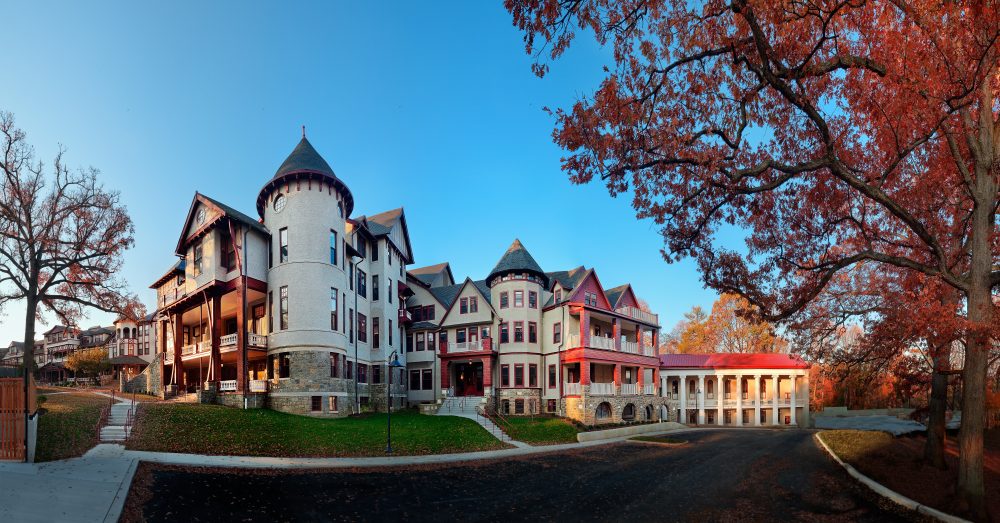New-construction homes have their pristine drywall and big closets, but secondhand properties often come with something the new ones don’t: delectable stories to tell. Consider the National Park Seminary, a quirky outpost just north of the nation’s capital. Founded in 1887 as a summer resort for Washington’s elite, the 32-acre spot later became a girls’ finishing school. During that era, an eccentric headmaster’s penchant for international flair culminated in sorority houses resembling, among other things, a Japanese pagoda, Ditch windmill, medieval castle (with drawbridge!), and a Swiss chalet. In 1942, the campus was annexed by the U.S. Army as a recuperation point for soldiers returning from World War II, and later Korea and Vietnam. Today, this prime spot bordering D.C.’s idyllic Rock Creek Park is undergoing another reincarnation – this time as a mixed-income residential community unlike any other.
It’s hard to put a price on history, but there’s no doubt it’s worth a premium to a certain subset of buyers. Whether the transformation involves a one-time factory, bank vault, school, or speakeasy, it’s not hard to fathom why building permits for historic makeovers have held steady, even when new-housing starts have come to a grinding halt.
Municipalities tend to like such projects because they preserve local character, revitalize blighted areas, boost the tax base, and create local jobs (the lino’s share of restoration must be performed on site). And adaptive reuse is eco-friendly to the extent that is saved demolition waste from landfills, stems sprawl by repurposing urbanized land, and reduces the energy consumption intrinsic to the building process. (t’s estimated that roughly 85 percent of the total embodied energy in the construction equation is expended in the production and transportation of materials to the jobsite.)
But historic reconstruction is not a business for dabblers. Multiple stakeholders, funding sources, and surprises all weigh into the equation. We are pleased to shed some light on the stories behind three such transformations.

